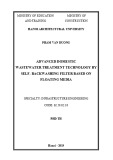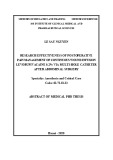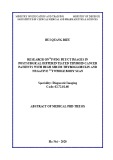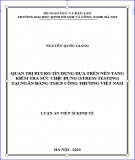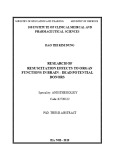
nervous - muscle system; Hypothermia.
1.1.3.2. Complications after brain death: unstable hemodynamics,
hypoxia, lack of circulation, increased blood osmotic pressure,
hyperglycemia, hypothermia, coagulopathy.
1.1.3.3. Electrolyte disorders after brain death: hypernatremia,
hypokalemia, hypoglycemia, hypocalcaemia, hypophosphatemia.
1.2. Several domestic and foreign studies on clinical and
laboratory characte ristics in brain-dead potential donors.
1.2.1. Brain death and brain death diagnosis in the world and in
Vietnam .
1.2.1.1. Definition: Brain death is defined as an “Irreversible cessation
of all functions of the entire brain, including the brainstem”
1.2.1.2. History.
In 1959, Mollaret - Goudon (France): mentioned "coma". In 1995,
the American Academy of Neurology (AAN) guideline: defined as
coma, absence of brainstem reflexes and apnoea - updated in 2010: A
patient determined to be brain dead is legally and clinical dead.
1.2.1.3. The diagnostic criteria of brain death in the world
UK (1976), France (1996), USA (1995) - updated (2010).
1.2.1.4. Criteria of brain death diagnosis of Vietnam
According to the "Law on donation, tissue and organ transplants,
donating the cadaver"and the Ministry of Health’s instruction
"Clinical and subclinical standards and cases of non-application of
clinical criteria to determine brain death".
1.2.2. Several studies on clinical and laboratory characteristics.
1.2.2.1. In the world: brain-dead patients have disorders such as
hypotension, coagulation disorders, diabetes mellitus, acidosis, kidney
failure, acute respiratory failure, the cause of brain death is stroke and






